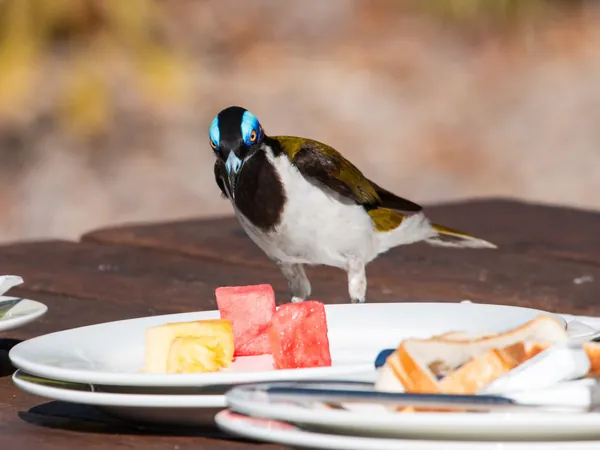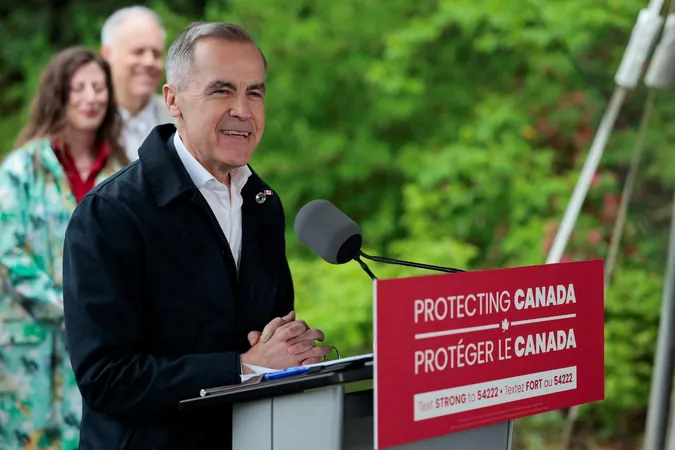
Shocking Study Reveals Urban Birds are Flashier and More Colorful!
2025-04-07
Author: Michael
Researchers from the University of Granada and the esteemed Max Planck Institute for Biological Intelligence have launched a groundbreaking study revealing that bird species thriving in urban environments are strikingly more colorful and less brown. This intriguing correlation sheds light on how urbanization influences wildlife, particularly in terms of plumage color.
Published in the journal Ecology Letters, this extensive research examined over 1,200 bird species, highlighting the profound impacts of urbanization on ecosystems. As cities expand globally, they pose considerable challenges to both animals and plants, significantly contributing to the alarming decline in biodiversity.
The field of urban ecology investigates these effects, with several studies already addressing how urban noise impacts bird communication. However, the new study uncovers a previously underexplored relationship—how urbanization affects the vibrant colors of bird feathers.
Plumage color plays essential roles in an array of behaviors—thermoregulation, camouflage, competition, and mate selection—adding further intrigue to the findings. Urban areas typically offer a warmer climate, fewer predators, and unique backgrounds dominated by concrete and asphalt. Consequently, it stands to reason that the urban landscape could influence animal coloration significantly.
Led by Bart Kempenaers, the clever research team analyzed a global dataset concerning bird abundance across varying levels of urbanization, combined with detailed plumage color data. Their findings reveal that birds prospering in urban settings have a smaller incidence of brown plumage.
Kaspar Delhey, one of the lead authors, explains, "Brown shades tend to dominate in natural habitats but struggle in the urban environment. The prevailing gray of cities and the scarcity of suitable habitats likely disadvantage brown birds." This suggests that specific colors of plumage could be critical determinants of success for avian species in urban settings.
Furthermore, the study indicates that successful urban birds boast more elaborate coloration, especially among females, raising questions about how the absence of predators in cities allows for greater visibility without the associated risks found in rural areas.
Intriguingly, while previous research claimed urban bird communities exhibited lower color diversity, this study flips the narrative. The authors demonstrated that despite a reduced number of bird species in urban areas, the remaining communities displayed a greater diversity of colors, challenging conventional assumptions and opening further avenues for research into urban wildlife adaptation.
As urbanization continues to rise, understanding these adaptations becomes crucial for conservation efforts aimed at preserving biodiversity within our rapidly changing environments. What other secrets might urban dwellers reveal in the future? Stay tuned for more captivating discoveries!









 Brasil (PT)
Brasil (PT)
 Canada (EN)
Canada (EN)
 Chile (ES)
Chile (ES)
 Česko (CS)
Česko (CS)
 대한민국 (KO)
대한민국 (KO)
 España (ES)
España (ES)
 France (FR)
France (FR)
 Hong Kong (EN)
Hong Kong (EN)
 Italia (IT)
Italia (IT)
 日本 (JA)
日本 (JA)
 Magyarország (HU)
Magyarország (HU)
 Norge (NO)
Norge (NO)
 Polska (PL)
Polska (PL)
 Schweiz (DE)
Schweiz (DE)
 Singapore (EN)
Singapore (EN)
 Sverige (SV)
Sverige (SV)
 Suomi (FI)
Suomi (FI)
 Türkiye (TR)
Türkiye (TR)
 الإمارات العربية المتحدة (AR)
الإمارات العربية المتحدة (AR)